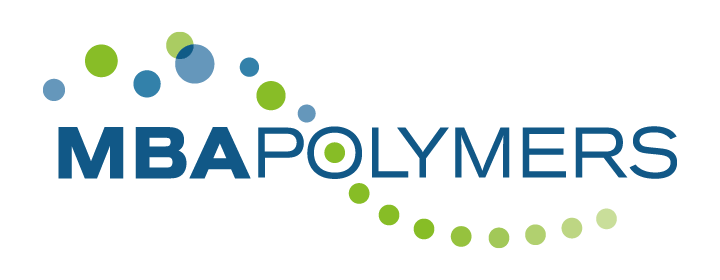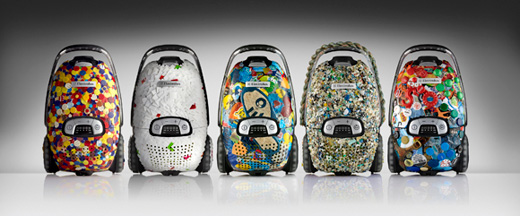Vac for the future: Electrolux get to grips with recycled plastics
In a plastics-heavy industry such as home appliances, any business for whom sustainability is more than just a buzz word should be exploring how it can incorporate post-consumer plastics into its supply chain.
In this area, appliances manufacturer Electrolux’s aims are pioneering and ambitious. Cecilia Nord, the director responsible for sourcing at Electrolux states their goal as “targeting sustainability leadership in the appliance industry”.
Cecilia’s approach extended beyond simply exploring where they could incorporate post-consumer plastics in the business’s supply chain; she wanted to spark dialogue too. “Our vision was to raise awareness of environmental issues, stimulate greater supply of plastics, and show the potential use, and to boost the distribution and sales of green home appliance products.’
My other car’s (still) a Porsche
To begin to make these changes, the company decided to explore recycling cars, which can yield huge amounts of plastic everywhere from batteries to bumpers, in the creation of their new vacuums. This, however, is the relatively easy part. Finding a sustainable and economically effective way of sourcing these plastics can be more of a challenge. Not for Electrolux. By teaming up with global post-consumer plastics specialist MBA Polymers, it was able to source sustainable supplies of recycled plastics for the vacuum’s components. Cecilia Nord commented: “Choosing the source for the material was one of the most difficult obstacles in the path of developing the Ultra Silencer Green because every type of recycled plastic had to be tested for quality and durability for the relevant component. Electrolux eventually teamed up with MBA Polymers…”
The result is a vacuum whose green credentials cannot be questioned. Electrolux’s Ultra Silencer vacuum is made from 55 per cent recycled polypropylene, saving over two litres of crude oil and 80 litres of water per unit, as well as reducing manufacturing energy consumption by 90 per cent. Yet environmental credentials do not come at the expense of durability, and all products are developed to withstand 10 years of normal usage.
If all of the 20 million vacuum cleaners that are sold annually in Europe were built in the same way, some 1.6 million cubic meters of water, and 251,000 barrels of oils could be saved.
The success of the project led Electrolux to explore how else it could use recycled plastics in its products and raise awareness of just how scarce recycled plastics are at present on land. For there is one area of the world where there is a surfeit of plastics that could be recycled.
Vac from the sea
Anyone who has watched the plastic bottles bobbing forlornly in the sea while on holiday will know that the amount of plastic waste going into our oceans is a problem. What they may not realise is the extent of this problem, and that the damage goes way beyond aesthetics. For example, around 20,000 tonnes of garbage is dumped in the North Sea every year, doing huge damage to the environment.
For Electrolux’s next foray into recycled plastics, they decided this was a fitting area to explore. Cecilia Nord commented: “Our oceans are filled with plastic waste. Yet on the land, there is a shortage of recycled plastics to make sustainable vacuum cleaners.” Electrolux’s solution was to work with local recycling organisations to recycle plastic and create a series of vacuums made from plastics recycled from the coastal areas all over the World, and to showcase them in a PR campaign introduced in 2010 – Vac from the Sea.
The vacuums themselves are highly attractive. For example in St Cyr-sur-Mer, France, the company teamed up with the Surfrider Foundation to collect plastic – such as beverage bottles, beach toys and even shoes – that had been washed up on the beach. The plastic gathered in this way from the Mediterranean was cut into heart shaped pieces and then attached to a thin shell of industrially recycled plastic to create the below:

Off the coast of the Phi Phi Islands in Thailand, coral reef divers Blue View Divers gathered plastics that had been abandoned in the sea. What was found was everything from discarded beer bottles, straws, to huge chunks of Styrofoam. The total rubbish collected over the two day cleanup event amounted to 962 kilos.
The collected plastics intended for the concept vac were split in a shredder into small square pieces. The white and coloured plastic squares were then mounted in a pattern that covers the entire top and the hub caps on the vacuum cleaner, while pieces from plastic bottles with brighter colours were used as accents.
Global reach
The Vac from the Sea initiative was a huge success. Between 2010 and 2012 the vacuum cleaners went on a world tour, and were displayed everywhere from the Milano Museum of Science and Technology to Australian Sustainability Days to raise awareness of the problem of plastic debris in the oceans.
The striking appearance of the vacuums also generated both print and broadcast coverage across the world. Nord commented: “Since the start, more than 200 million people have been engaged by “Vac from the Sea”, through print, online or social media. What’s perhaps even more important is that materials with a superior sustainability profile have been introduced into the household appliance industry and are now being used across the company.
She concluded: ‘The real victory is that “Vac from the Sea” has raised awareness of the scarcity of recycled plastic – not just in green communities but in the broad masses.’


